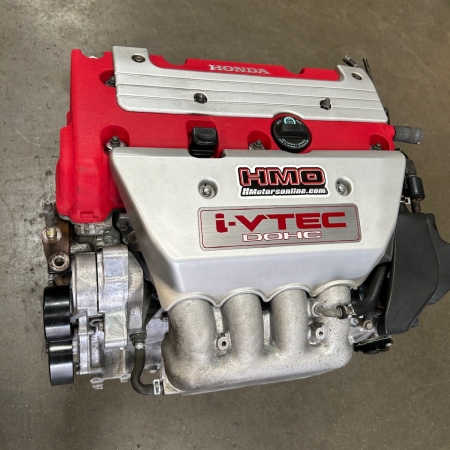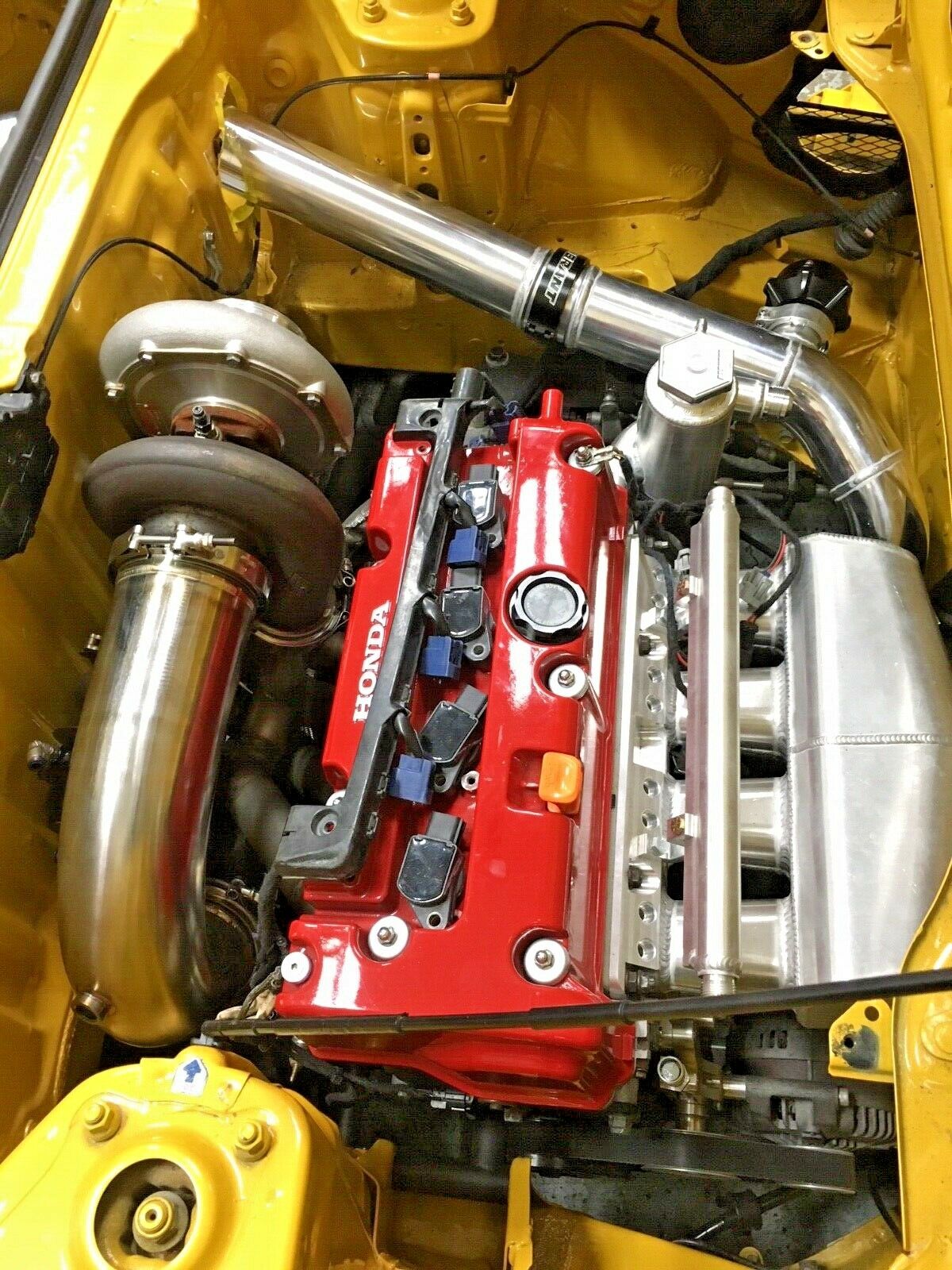Get the Best Out of Your Vehicle with a Efficient K20 Engine for Better Control
Get the Best Out of Your Vehicle with a Efficient K20 Engine for Better Control
Blog Article
Discover the Value of the K20 Engine in Modern Automotive Design
The K20 engine, presented in 2001, has actually left an enduring mark on vehicle design. Its impact can be mapped in succeeding engine layouts, and its appeal amongst fanatics is obvious.
The Beginning and Evolution of the K20 Engine
In spite of its humble beginnings, the K20 engine has undergone a significant evolution since its creation. Originally established by Honda, it was introduced in 2001 as part of the 'K series' engines. The K20 was a revolutionary product at that time, boasting a compact layout yet powerful efficiency. It was a reaction to the expanding need for extra effective engines in the vehicle sector. For many years, its style was fine-tuned and optimized to fulfill the altering demands of modern-day cars. This improvement was not simply in regards to power, but additionally in gas efficiency and ecological standards. Today, the K20 engine stands for a blend of Honda's innovative design and the needs of modern cars, noting a substantial milestone in auto engineering.

Technical Specs and Efficiency Functions of the K20
The K20 engine, recognized for its portable yet powerful style, stands apart worldwide of automotive design as a result of its excellent technical specifications and efficiency functions. Its i-VTEC (Intelligent Variable Shutoff Timing and Raise Electronic Control) system boosts performance, while assisting in a broad power band. The engine, essentially a 2.0-liter four-cylinder, generates between 155 to 212 horse power, relying on the design. The K20's high compression proportion (about 11:1) adds to its remarkable efficiency. Its lightweight construction, mostly using aluminium, boosts fuel efficiency. Furthermore, the engine's low-emission technology straightens with contemporary eco-friendly criteria. Notably, its integrity and toughness are acclaimed, with several K20 engines surpassing 200,000 miles without substantial issues. These attributes really emphasize the K20's engineering prowess.
The K20 Engine's Influence on Modern Engine Design
The influence of the K20 engine on contemporary engine layout can not be overemphasized. Its innovative efficiency capacities set new requirements in the vehicle sector, pushing boundaries and demanding a lot more from engine modern technology. Equally significant was its ingenious technique to sustain performance, proving that performance and economic climate can undoubtedly exist side-by-side in the globe of high-performance engines.
Revolutionizing Performance Capabilities

Development in Fuel Efficiency
While high performance has been a defining feature of the K20 engine, its impact expands beyond raw power to the realm of fuel performance. The engine's layout includes sophisticated innovations such as variable valve timing and lift electronic control (VTEC) and straight gas injection, which considerably improve gas economic situation. These modern technologies allow the engine to provide optimal power result while lessening fuel consumption, hence establishing a new requirement in effectiveness. The K20 engine's innovative gas effectiveness has driven various other producers to do the same, resulting in greener, more affordable engines across the industry. The K20 engine, consequently, not only revolutionized efficiency however additionally set a benchmark click to investigate in gas efficiency, coming to be an important impact in contemporary engine layout.
Remarkable Automobiles Outfitted With the K20 Engine
Numerous automobiles have actually gained from the combination of the K20 engine. Amongst them, the Honda Civic Type R and the Acura RSX Type-S attract attention. These vehicles will function as focal factors in this discussion.
Honda Civic Type R
The Honda Civic Kind R holds a popular area among automobiles equipped with the excellent K20 engine. Notably, the Kind R's engine also features a thoroughly created exhaust manifold and a high compression proportion, contributing to its exceptional efficiency. The application of the K20 engine in the Civic Type R is a prime example of the engine's potential, enhancing its significance in modern automotive engineering.
Acura RSX Type-S
Another noteworthy instance of an automobile showcasing the K20 engine's excellent capacities is the Acura RSX Type-S. This sports coupe, produced between 2002 and 2006, housed an i-VTEC K20A2 or K20Z1 engine, depending on the production year. This robust engine, coupled with the car's light-weight body, made the RSX Type-S a pressure to be thought with. The engine's 200 horsepower at 7,400 RPM and 142 lb-ft of torque at 6,000 RPM gave this automobile an active acceleration and a speedy reaction. Its remarkable power-to-weight ratio further boosted its performance. With a 6-speed guidebook transmission, the RSX Type-S provided smooth changing and ideal control, personifying the K20 engine's capacity in a portable yet powerful plan. Obviously, the Acura RSX Type-S continues to be an unforgettable testimony to the K20 engine's prowess.
Tuning Possible and Adjustments of the K20 Engine
Renowned for its excellent power and flexibility, the K20 visit this website engine uses remarkable tuning potential and alteration possibilities. Its high-revving nature and strong standard performance make it an excellent system for improvements, from bolt-ons to interior upgrades. The engine's design enables more air and gas intake, which can substantially increase horse power. Turbocharging or supercharging the K20 engine can also lead to significant power gains. Its compatibility with a selection of aftermarket parts supplies enthusiasts with unlimited alternatives for customization. Nevertheless, it's crucial to note that these alterations need to be performed with accuracy to keep the engine's additional resources reliability and durability. The K20 engine's inherent sturdiness and convenience make it a favorite among automobile receivers worldwide.
The Future of Four-Cylinder Engines: Lessons From the K20
Attracting motivation from the excellent abilities of the K20 engine, the future of four-cylinder engines seems promising. This engine, with its innovative design and total efficiency, has actually set a high requirement for its successors. It is anticipated that future four-cylinder engines, while still preserving gas effectiveness and small size, will certainly profit from the K20's toughness.
Additionally, the developments in technology are most likely to boost the power outcome, resilience, and adaptability of these engines. The lessons found out from the K20 engine's advancement and usage are important in guiding the layout of future power systems. Also as automobile design progresses towards even more sophisticated propulsion systems, the heritage and impact of the K20 engine on four-cylinder technology will remain substantial.
Final thought
The K20 engine has undeniably shaped modern vehicle design with its ingenious design and high-performance abilities. Its impact can be seen in succeeding engine designs and its appeal among makers and enthusiasts. With its capacity for adjusting and modifications, the K20 remains to press the boundaries of what's feasible in compact four-cylinder engines. The lessons discovered from the K20 will undoubtedly remain to influence the future of automobile design.
The K20 Engine's Impact on Modern Engine Style
The impact of the K20 engine on contemporary engine style can not be overemphasized.Indisputably, the K20 engine has left an indelible mark on modern-day engine design. Through the K20 engine, the automotive sector observed a brand-new era of engine design, one that prioritizes not just raw power, but likewise the motorist's total experience.
The K20 engine, consequently, not just revolutionized performance but also set a benchmark in fuel efficiency, becoming a vital influence in modern engine design.
Report this page